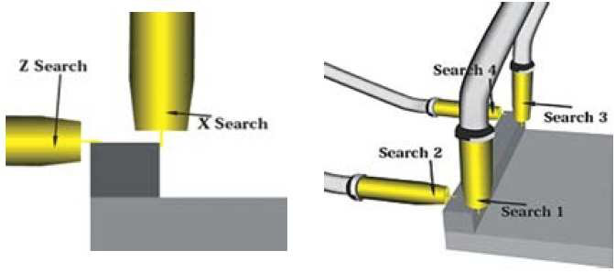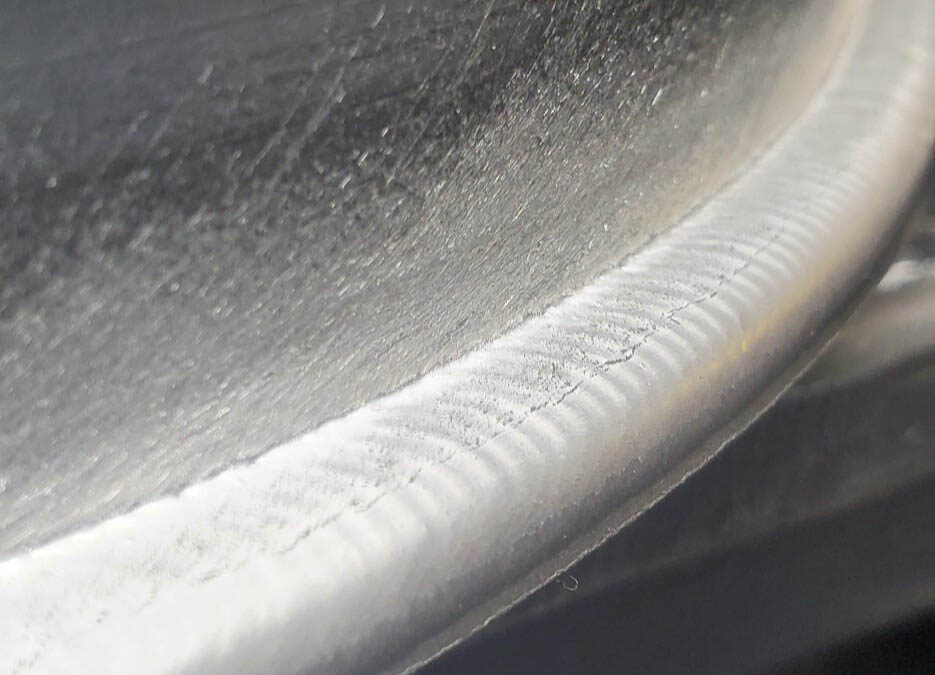In today’s highly competitive market, manufacturers must stay both lean and efficient. Taking advantage of the different seam tracking options available for your welding projects is one way to gain an edge.
Here at Bancroft Engineering, we understand the importance of optimizing your welding process.
Tactile Seam Tracking 
Tactile seam tracking systems track the seam using a sensor with a tip that physically touches along the length of the seam about 2-3” in front of the arc. When a change in location or alignment is detected, the system responds and adjusts to the correct position. It can be used in almost any welding process. Tactile seam tracking is very versatile and works well on any material type. This option offers a great balance between cost and flexibility.
One disadvantage to tactile seam tracking is that the torch is adjusting in real time according to where the probe is touching not where the torch is welding. If the probe is 3” in front of the arc and a quick drastic change to the seam is detected the arc may actually move outside of the seam. To solve this problem the tracker can be paired with another type of control system to delay the correction in relation to the travel speed of the weld head or part.
Through Arc Seam Tracking
Through arc seam tracking is a type of 2-axis real-time tracking. The tracking occurs as the weld is being deposited and adjusts by monitoring the voltage across the arc. In order to shift along 2 axes’ with through arc tracking weaving is required. As the tip to work distance changes so does the voltage across the arc. This change in voltage is monitored and used to adjust the path of the torch, maintaining proper weld position in the joint.
Laser Vision Seam Tracking
Laser based vision tracking, also referred to as optical tracking, involves a laser beam device which hits the welding surface, reflects off and bounces back to the sensor. With this technology, the sensor then recognizes exactly where the seam is located. Laser vision seam tracking is highly reliable and great for high speed welding applications for both small and large parts.
Touch Sensing 
Touch sensing, or wire touch sensing, is the physical touching of the weld wire to the welding surface to detect the joint. Most commonly used in robotic welding applications, this type of seam tracking uses low voltage through the welding wire or torch tip to search and detect the welding surface and seam. The seam needs to be detected prior to welding so the cycle time can be double or more compared to that of other methods.
Each tracking system has its positives and negatives. Work with a Bancroft weld specialist to understand which one is the best option for your process. Located in Waukesha, WI, our team of welding engineers are here to help you automate and optimize your process. Give us a call today at 262-786-1880, or email: sales@bancrofteng.com to get started.



